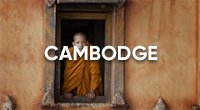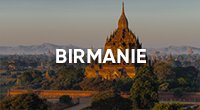Contents
ToggleWhere is the One Pillar Pagoda?
The One Pillar Pagoda (Chùa Một Cột) is one of Hanoi’s most iconic landmarks, located in the Ba Đình District, right at the heart of the capital’s historic and political center. It sits just 100 meters from Ho Chi Minh’s Mausoleum, within walking distance of the Presidential Palace, Ba Đình Square, and the Imperial Citadel of Thăng Long—a UNESCO World Heritage Site.
Surrounded by peaceful gardens and a lotus pond, the pagoda is a serene spot amid the bustle of the city. Its Vietnamese name, Liên Hoa Đài (“Lotus Blossom Platform”), reflects both its design and its deep spiritual symbolism in Buddhism.

The story of the One Pillar Pagoda is deeply tied to Vietnam’s royal past. In 1049, Emperor Lý Thái Tông is said to have dreamed of the Bodhisattva Avalokitesvara (the Goddess of Compassion), seated on a radiant lotus flower, handing him a baby boy. Not long after, the Empress gave birth to a long-awaited son—an heir to the throne.
In gratitude for this blessing, the emperor ordered the construction of a pagoda built in the form of a lotus rising from the water. The lotus, in Buddhist tradition, represents purity, enlightenment, and rebirth, as it grows unstained from muddy waters.
Originally named Diên Hựu Pagoda (“Long-lasting Blessing”), it soon became not only a royal temple but also a spiritual beacon for the Vietnamese people, symbolizing prosperity and harmony.

A One-of-a-Kind Architecture
What immediately captivates visitors to the One Pillar Pagoda is its remarkable lotus-inspired design.
The entire shrine rests on a single stone pillar, 4 meters high, emerging gracefully from a square lotus pond. On top stands a wooden pavilion, crowned with a curved tiled roof that resembles a sacred lotus blossom rising from the water.
Each corner of the roof is adorned with the traditional motif of “Two Dragons Playing with the Moon”—a symbol of both royal authority and spiritual harmony in Vietnamese culture.
Inside, a golden statue of Avalokitesvara (the Goddess of Compassion) is enshrined, making the pagoda not only an architectural gem but also a sacred site of prayer and meditation for Buddhists.

Resilience Through History
Over nearly a thousand years, the One Pillar Pagoda has undergone numerous restorations. Its most tragic moment came in 1954, when it was destroyed by the French army during their withdrawal from Hanoi. Just a year later, in 1955, Vietnamese architect Nguyễn Bá Lăng oversaw its reconstruction, restoring the iconic silhouette that continues to inspire visitors today.
In recognition of its cultural value, the pagoda has been declared a National Historic and Cultural Monument. In 2012, it was further honored by the Asia Records Organization as the “Most Unique Pagoda in Asia.”

Spiritual Significance and Festivities
Beyond its striking architecture, the One Pillar Pagoda remains a place of deep spiritual devotion. Dedicated to Avalokitesvara, it embodies compassion, blessings, and protection. Many locals and pilgrims come here to pray for health, fertility, and prosperity.
Throughout the year, the pagoda becomes especially lively during Buddhist festivals, including:
- Vesak (Buddha’s Birthday) – marked by the bathing of Buddha statues.
- Tết Nguyên Tiêu (First Full Moon of the Lunar Year) – prayers for peace, harmony, and good fortune.
- Vu Lan Festival (7th lunar month) – a time to honor ancestors and departed souls.
During these occasions, the quiet sanctuary fills with chanting, incense, and vibrant offerings, creating a serene yet festive atmosphere.

How to Visit the One Pillar Pagoda
- By bus: Take lines 09, 18, 22, or 33 and get off at the Ho Chi Minh Mausoleum stop.
- By taxi or Grab: Around 10 minutes from Hanoi’s Old Quarter.
- By bike or motorbike: A pleasant 15-minute ride from central Hanoi.
👉 Entry: Free for all visitors
⏰ Recommended visit time: 1–2 hours
🌅 Best time to visit: Early morning or late afternoon, when the soft light enhances the tranquil setting.

Nearby Attractions
Thanks to its central location, the One Pillar Pagoda can easily be combined with other iconic Hanoi landmarks:
- Ho Chi Minh Mausoleum – 100 m
- Presidential Palace – 200 m
- Imperial Citadel of Thăng Long – 1 km
- Temple of Literature – 1.5 km
- Hoàn Kiếm Lake & Old Quarter – 4 km
This makes the pagoda an ideal stop on a full-day cultural exploration of Hanoi.

Frequently Asked Questions
- What does the One Pillar Pagoda symbolize?
➡️ The pagoda represents compassion, purity, and enlightenment, symbolized by the sacred lotus flower rising from muddy water. - Is there an entrance fee?
➡️ No, admission is completely free. - How long should I spend here?
➡️ About 1–2 hours, especially if you combine your visit with nearby attractions.
Conclusion
The One Pillar Pagoda is more than just a remarkable piece of architecture—it is a timeless spiritual symbol of Vietnam. As a witness to Hanoi’s thousand-year history, it embodies serenity, resilience, and devotion.
Whether you are a history enthusiast, a culture lover, or a traveler seeking spiritual experiences, visiting the One Pillar Pagoda is a must-do in Hanoi.




